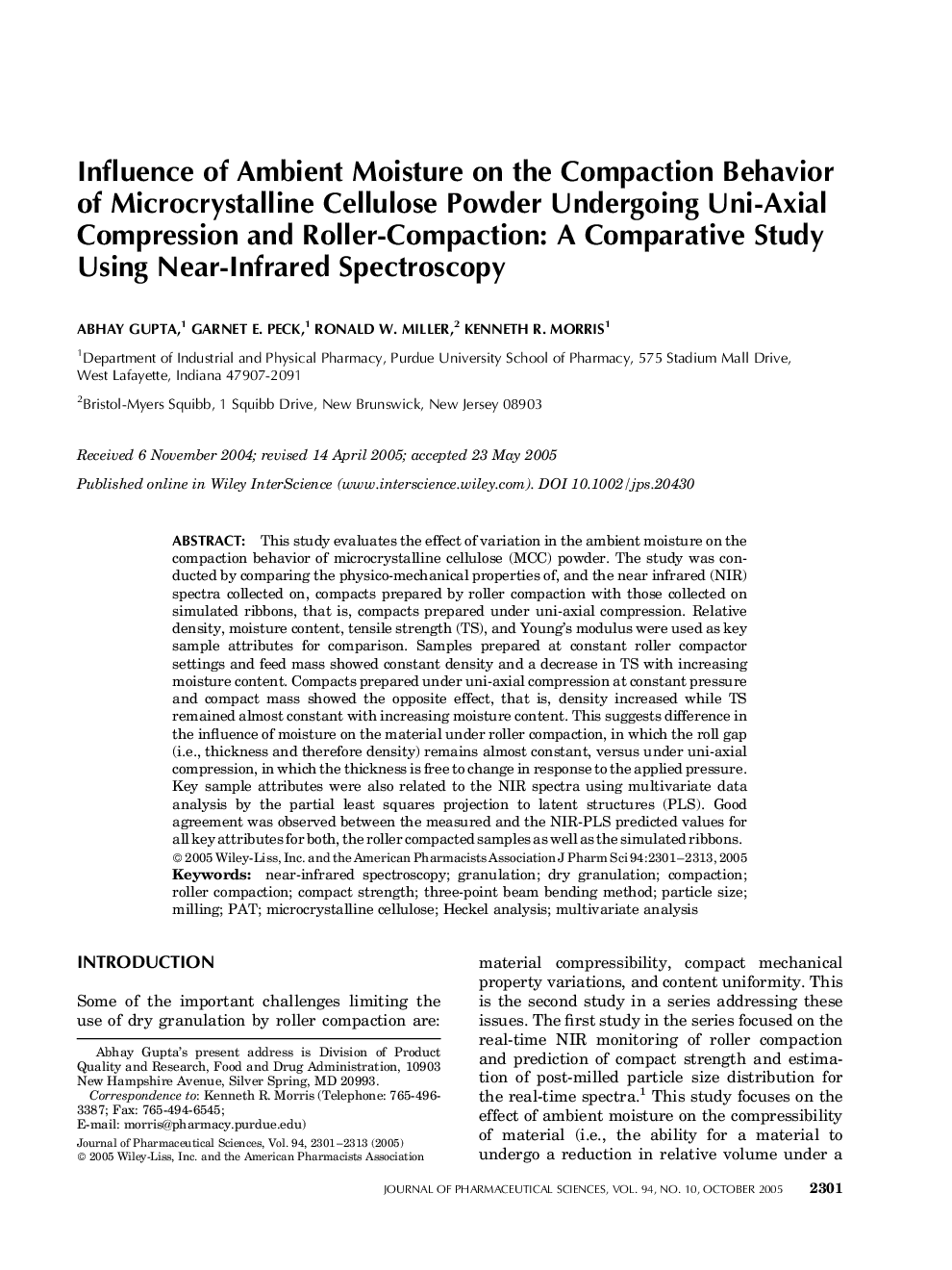| Article ID | Journal | Published Year | Pages | File Type |
|---|---|---|---|---|
| 2486529 | Journal of Pharmaceutical Sciences | 2005 | 13 Pages |
Abstract
This study evaluates the effect of variation in the ambient moisture on the compaction behavior of microcrystalline cellulose (MCC) powder. The study was conducted by comparing the physico-mechanical properties of, and the near infrared (NIR) spectra collected on, compacts prepared by roller compaction with those collected on simulated ribbons, that is, compacts prepared under uni-axial compression. Relative density, moisture content, tensile strength (TS), and Young modulus were used as key sample attributes for comparison. Samples prepared at constant roller compactor settings and feed mass showed constant density and a decrease in TS with increasing moisture content. Compacts prepared under uni-axial compression at constant pressure and compact mass showed the opposite effect, that is, density increased while TS remained almost constant with increasing moisture content. This suggests difference in the influence of moisture on the material under roller compaction, in which the roll gap (i.e., thickness and therefore density) remains almost constant, vs. under uni-axial compression, in which the thickness is free to change in response to the applied pressure. Key sample attributes were also related to the NIR spectra using multivariate data analysis by the partial least squares projection to latent structures (PLS). Good agreement was observed between the measured and the NIR-PLS predicted values for all key attributes for both, the roller compacted samples as well as the simulated ribbons. © 2005 Wiley-Liss, Inc. and the American Pharmacists Association
Keywords
Related Topics
Health Sciences
Pharmacology, Toxicology and Pharmaceutical Science
Drug Discovery
Authors
Abhay Gupta, Garnet E. Peck, Ronald W. Miller, Kenneth R. Morris,
